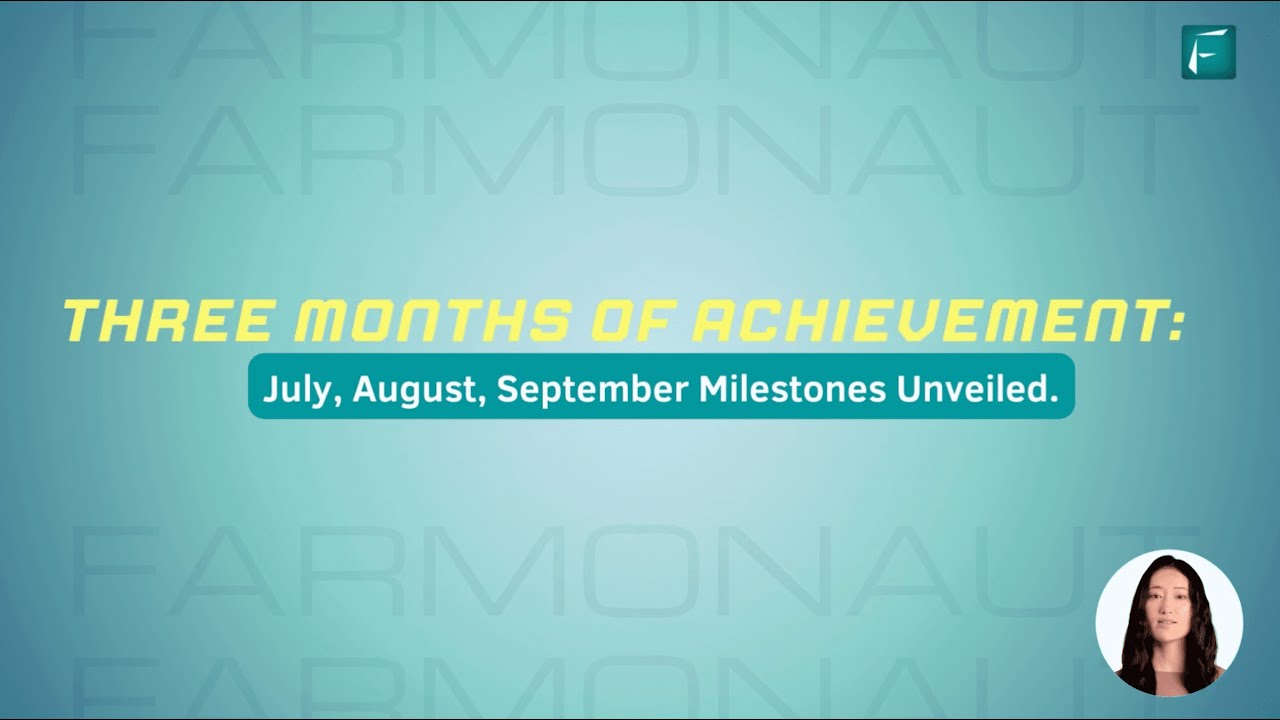EU Carbon Border Adjustment Mechanism: How It’s Reshaping European Urea Markets and Fertilizer Pricing

“The EU’s CBAM will require urea importers to purchase carbon certificates starting February 2026, impacting fertilizer pricing.”
As we delve into the intricate world of European urea markets and fertilizer pricing, a seismic shift is on the horizon. The European Union’s Carbon Border Adjustment Mechanism (CBAM) is set to reshape the landscape of agricultural inputs, particularly urea, in ways that will reverberate through global supply chains and farming practices. At Farmonaut, we recognize the importance of staying ahead of such industry-altering trends, which is why we’re bringing you this comprehensive analysis of CBAM’s impact on the European urea market.
Our mission at Farmonaut is to empower farmers with cutting-edge technology and data-driven insights. While we don’t directly manufacture or sell farm inputs, our satellite-based farm management solutions provide valuable information that can help farmers navigate changing market conditions, including those brought about by policies like CBAM. Let’s explore how this groundbreaking climate policy is set to transform the fertilizer industry.
Understanding the EU Carbon Border Adjustment Mechanism
The EU Carbon Border Adjustment Mechanism is a pivotal component of the European Green Deal, designed to combat carbon leakage and level the playing field for EU producers subject to stringent environmental regulations. Set to be phased in from February 2026, CBAM will require importers of certain goods, including urea, to purchase carbon certificates corresponding to the carbon price that would have been paid had the goods been produced under the EU’s carbon pricing rules.
Key aspects of CBAM include:
- A focus on carbon-intensive sectors, including fertilizers
- Application to imports from non-EU countries
- A transition period starting October 31, 2023, for reporting emissions
- Full implementation with financial obligations beginning in 2026
For the urea market, this means significant changes are on the horizon. European producers, long operating under the EU Emissions Trading System (ETS), may find themselves on more equal footing with international competitors. However, the implications for pricing, trade flows, and agricultural practices are complex and far-reaching.
Impact on European Urea Production and Imports
The introduction of CBAM is expected to have a profound effect on both domestic European urea production and imports. Here’s how we anticipate the landscape will shift:
Domestic Production
European urea producers stand to benefit from CBAM in several ways:
- Enhanced Competitiveness: By leveling the carbon cost playing field, EU manufacturers may see improved margins and market share.
- Incentivized Investment: The policy could spur investment in cleaner production technologies, potentially leading to increased domestic capacity.
- Price Stability: With a more balanced market, prices for domestically produced urea may stabilize, offering more predictability for both producers and consumers.
However, challenges remain. European producers will need to continue innovating to maintain efficiency and may face pressure to absorb some of the increased costs faced by importers to remain competitive.
Import Dynamics
The import landscape for urea in Europe is set for a significant shake-up:
- Cost Increases: Importers will need to factor in the cost of carbon certificates, potentially raising the price of imported urea.
- Supplier Shifts: Countries with lower carbon footprints in urea production may gain a competitive edge in the EU market.
- Volume Changes: While a dramatic drop in imports is unlikely due to Europe’s reliance on foreign urea, we may see a recalibration of import volumes and sources.
These changes could lead to a reshuffling of major urea suppliers to the EU, with countries like Egypt, Algeria, and Russia potentially seeing shifts in their market share.
Explore how Farmonaut’s satellite technology can help you adapt to changing fertilizer markets: Web App | Android App | iOS App
Pricing Implications for Agricultural Fertilizers
The implementation of CBAM is expected to have significant implications for fertilizer pricing, particularly for urea:
- Price Increases: The cost of carbon certificates is likely to be passed on to end-users, potentially raising urea prices by €10-20/t or even up to €80-100/t in some scenarios.
- Market Uncertainty: As traders and importers grapple with new regulations, we may see increased price volatility in the short to medium term.
- Regional Variations: Prices may vary more significantly between EU regions depending on local production capacity and import reliance.
These pricing changes could have cascading effects on agricultural practices and crop selection, potentially influencing farmers’ decisions on fertilizer use and crop rotations.
The AdBlue Connection: Automotive Urea Grade Considerations
The impact of CBAM extends beyond agricultural urea to the automotive sector, particularly in the production of AdBlue, a crucial additive for diesel engines:
- Supply Chain Disruptions: Changes in urea pricing and availability could affect the production and distribution of AdBlue.
- Cost Implications: Higher urea prices may lead to increased costs for AdBlue production, potentially affecting both manufacturers and consumers.
- Market Share Shifts: Secondary AdBlue producers who rely on imported urea may face challenges, potentially leading to a consolidation in the market.
The interplay between agricultural and automotive urea markets highlights the far-reaching consequences of CBAM across multiple industries.
“CBAM’s implementation could significantly affect EU Emissions Trading System participants, domestic producers, and international urea suppliers simultaneously.”
Global Trade Dynamics and International Suppliers
CBAM’s influence will extend far beyond EU borders, reshaping global urea trade patterns:
- Supplier Strategies: Major urea exporters like Egypt, Algeria, and Russia may need to adapt their production processes or pricing strategies to remain competitive in the EU market.
- Trade Diversion: We may see a shift in trade flows, with some suppliers potentially redirecting exports to non-EU markets to avoid CBAM-related costs.
- Technology Transfer: There could be an increased focus on cleaner production technologies in exporting countries to maintain access to the EU market.
These changes could lead to a more fragmented global urea market, with regional price disparities becoming more pronounced.

Implications for Agricultural Practices and Sustainability
The ripple effects of CBAM on urea markets will inevitably influence farming practices and sustainability efforts:
- Fertilizer Use Efficiency: Higher urea prices may encourage farmers to optimize fertilizer application, potentially leading to more sustainable practices.
- Alternative Fertilizers: There could be increased interest in alternative nitrogen sources or organic fertilizers as farmers seek to manage costs.
- Precision Agriculture: Technologies that enable precise fertilizer application may see increased adoption as farmers look to maximize efficiency.
At Farmonaut, our satellite-based crop health monitoring and AI-driven advisory systems can play a crucial role in helping farmers adapt to these changes. By providing real-time insights into crop health and optimizing resource use, we enable farmers to make informed decisions in a changing market landscape.
Discover how Farmonaut’s API can integrate critical agricultural data into your systems: Farmonaut API | API Developer Docs
Market Uncertainties and Long-term Outlook
As with any significant policy change, CBAM brings a degree of uncertainty to the urea market:
- Implementation Challenges: The complexity of calculating and verifying embedded emissions may lead to initial confusion and potential market disruptions.
- Policy Adjustments: There may be refinements to CBAM as its impacts become clearer, potentially affecting long-term market dynamics.
- Global Response: How other major economies respond to CBAM could shape the future of international urea trade and production.
Despite these uncertainties, the long-term outlook points towards a more carbon-conscious urea market, with potential benefits for innovative and efficient producers both within and outside the EU.
Comparative Analysis of CBAM Impact on Urea Market
| Factor | Pre-CBAM | Post-CBAM Implementation | Potential Impact |
|---|---|---|---|
| Average urea price per ton in EU | €300-350 | €350-450 | 15-30% increase |
| Carbon certificate cost for importers | N/A | €10-100 per ton | New cost burden |
| EU domestic urea production volume | 8 million tons | 9-10 million tons | 10-25% increase |
| Non-EU urea import volume | 6 million tons | 5-5.5 million tons | 10-15% decrease |
| AdBlue production cost | €0.20-0.25 per liter | €0.25-0.35 per liter | 20-40% increase |
| EU fertilizer industry emissions | 50 million tons CO2e | 40-45 million tons CO2e | 10-20% reduction |
This table provides a snapshot of the expected changes in the urea market due to CBAM implementation. It’s important to note that these figures are estimates and may vary as the policy is fully implemented and the market adjusts.
Adapting to the New Urea Market Reality
As the European urea market braces for the impact of CBAM, stakeholders across the agricultural value chain must prepare for change. Here are some strategies that various players can consider:
For Farmers:
- Invest in precision agriculture technologies to optimize fertilizer use
- Explore alternative nitrogen sources and organic fertilizers
- Consider crop rotations that reduce reliance on nitrogen-intensive crops
- Stay informed about market trends and pricing forecasts
For Urea Producers:
- Invest in cleaner production technologies to reduce carbon footprint
- Explore opportunities for vertical integration in the fertilizer supply chain
- Develop strategies to communicate the value of low-carbon urea to customers
For Importers and Traders:
- Develop robust systems for tracking and reporting carbon emissions
- Diversify supplier base to include producers with lower carbon footprints
- Consider hedging strategies to manage price volatility
At Farmonaut, we’re committed to providing the tools and insights needed to navigate these changes. Our satellite-based crop monitoring and AI-powered advisory services can help farmers optimize their fertilizer use and adapt to changing market conditions.
The Role of Technology in Adapting to CBAM
As the urea market evolves under CBAM, technology will play a crucial role in helping stakeholders adapt. At Farmonaut, we believe that data-driven solutions are key to navigating this new landscape:
- Satellite Monitoring: Our satellite-based crop health monitoring can help farmers optimize fertilizer application, potentially reducing overall urea usage and costs.
- AI-Powered Insights: The Jeevn AI Advisory System provides personalized recommendations that can help farmers make informed decisions about fertilizer use in light of changing prices.
- Blockchain Traceability: Our blockchain solutions can assist in tracking the carbon footprint of urea production and distribution, potentially helping importers comply with CBAM requirements.
- Resource Management Tools: Our fleet and resource management features can help agribusinesses optimize their operations, potentially offsetting some of the increased costs associated with CBAM.
By leveraging these technologies, agricultural stakeholders can not only comply with new regulations but also find opportunities for efficiency and sustainability in a changing market.
Ready to leverage cutting-edge agricultural technology? Explore Farmonaut’s solutions: Web App | Android App | iOS App
Conclusion: Navigating the Future of European Urea Markets
The EU Carbon Border Adjustment Mechanism represents a significant shift in the European urea market landscape. As we’ve explored, its impacts will be far-reaching, affecting everything from pricing and trade dynamics to agricultural practices and sustainability efforts.
Key takeaways include:
- Potential price increases for urea in the EU market
- Shifts in the competitive landscape between domestic and international producers
- Implications for related markets like AdBlue
- The growing importance of low-carbon production methods
- Opportunities for technology-driven solutions in agriculture
As we move towards 2026 and full CBAM implementation, stakeholders across the agricultural value chain must stay informed and adaptable. At Farmonaut, we’re committed to providing the tools and insights needed to thrive in this evolving landscape.
By embracing precision agriculture, leveraging data-driven insights, and staying attuned to market trends, farmers and agribusinesses can navigate the challenges posed by CBAM and potentially find new opportunities for efficiency and sustainability.
The future of European urea markets under CBAM may be complex, but with the right strategies and technologies, it’s a future full of potential for innovation and sustainable growth.
FAQ: EU Carbon Border Adjustment Mechanism and Urea Markets
Q: What is the EU Carbon Border Adjustment Mechanism (CBAM)?
A: CBAM is a climate policy designed to put a carbon price on imports of certain goods from outside the EU, including urea. It aims to reduce carbon leakage and level the playing field for EU producers subject to stricter environmental regulations.
Q: When will CBAM be implemented for urea imports?
A: CBAM will be phased in starting February 2026, with a transition period for reporting emissions beginning on October 31, 2023.
Q: How will CBAM affect urea prices in Europe?
A: CBAM is expected to increase urea prices in Europe, potentially by €10-20 per ton or more, depending on the cost of carbon certificates and market dynamics.
Q: Will CBAM impact domestic urea production in the EU?
A: Yes, CBAM may enhance the competitiveness of EU urea producers by leveling the carbon cost playing field with international competitors.
Q: How might CBAM affect global urea trade patterns?
A: CBAM could lead to shifts in global urea trade, potentially favoring suppliers with lower carbon footprints and encouraging cleaner production methods worldwide.
Q: What are the implications of CBAM for farmers?
A: Farmers may face higher fertilizer costs, which could encourage more efficient fertilizer use, exploration of alternatives, and adoption of precision agriculture technologies.
Q: How will CBAM affect the AdBlue market?
A: CBAM may increase production costs for AdBlue, potentially affecting pricing and market dynamics in the automotive urea sector.
Q: Can technology help in adapting to CBAM-related changes?
A: Yes, technologies like satellite crop monitoring, AI-powered advisory systems, and precision agriculture tools can help stakeholders optimize resource use and adapt to changing market conditions.

















